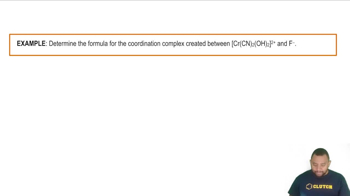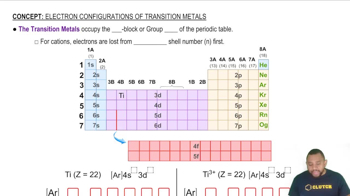Here are the essential concepts you must grasp in order to answer the question correctly.
Coordination Complexes
Coordination complexes consist of a central metal atom or ion bonded to surrounding molecules or ions called ligands. The arrangement and type of ligands influence the properties and reactivity of the complex. In the case of trans-[Fe(CN)₄(CO)₂]²⁻, the ligands CN⁻ and CO are crucial for determining the electronic structure and stability of the complex.
Recommended video:
Coordination Complexes Example
Oxidation States
The oxidation state of an element in a compound indicates the degree of oxidation of that element, reflecting the number of electrons lost or gained. In the complex trans-[Fe(CN)₄(CO)₂]²⁻, determining the oxidation state of iron (Fe) involves considering the charges of the ligands and the overall charge of the complex, which is essential for understanding its electronic configuration.
Recommended video:
Spin States in Transition Metal Complexes
Spin states refer to the arrangement of electrons in the d-orbitals of transition metal complexes, which can be classified as high spin or low spin. High spin complexes have unpaired electrons in higher energy orbitals, while low spin complexes have paired electrons in lower energy orbitals. The nature of the ligands, such as whether they are strong or weak field ligands, influences whether a complex will be high spin or low spin.
Recommended video:




